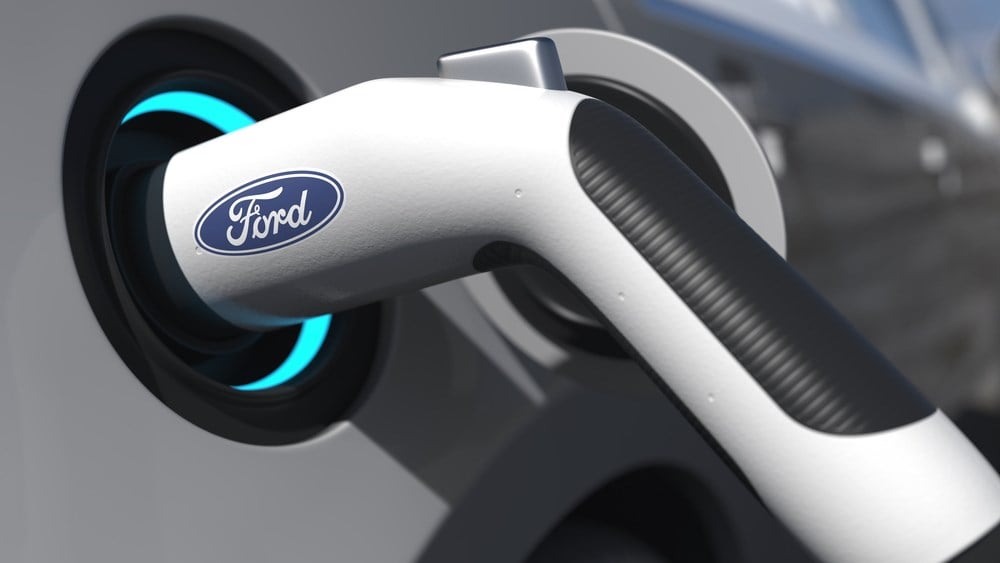
Ford Motor Co. (NYSE: F) shares traded lower on October 27 after the automaker released third-quarter results, with the headline news being a more measured approach to electric vehicle production.
In the earnings conference call, Ford CEO Jim Farley said, “A great product is not enough in the EV business anymore. We have to be totally competitive on cost.”
He mentioned Tesla Inc.'s (NASDAQ: TSLA) focus on the cost and scaling of its Model Y, calling it “a huge gift” to Ford.
Farley added that Ford's updated and simplified second-generation EVs intended to deliver a margin comparable to internal combustion engine cars by 2026, “the dynamic changes in the market, pricing, adoption rates, and regulations are forcing us to further reduce the cost of our EVs.”
In other words, customers still don't want to pay big bucks for Mustang Mach-E or any other EV just yet.
Auto workers have not approved tentative deal
That was Ford's second big piece of news for the week, with the first being the company's tentative deal with the United Auto Workers. Union members still need to approve the deal.
As a result of the strike, Ford withdrew its 2023 guidance as with ratification, the tentative labor agreement is pending, which means predicting results is more challenging.
The UAW has released some details of the pending deal. The parties have tentatively agreed on a 25% pay increase over the next four-and-a-half years, which will certainly dent Ford's earnings and margins.
Third-quarter revenue rose 11% to $43.8 billion, while earnings grew by 30% to 39 cents a share. The company beat Wall Street's revenue views but missed on earnings.
Ford's potential deal with auto workers may spill over to General Motors Co. (NYSE: GM) and Stellantis NV (NYSE: STLA), which the union is also striking. Analysts believe the union's deal may pave the way for agreements with both those companies.
UAW Ford workers to return to the job
The UAW asked Ford workers to return to the job, saying that would pressure Stellantis and GM to reach agreements. Details of the return to work have not yet been announced.
Farley, who recently visited all the sites affected by strikes, said, "Once the deal is ratified, we will provide all of you a deeper look at the contract and its impact on our business."
On October 23, General Motors reported third-quarter net income and revenue that beat views, as you can see using MarketBeat's General Motors earnings data. The company also revised its targets for electric vehicle production.
As of early in the session on October 27, GM shares were trading lower for the week.
The company planned to produce around 100,000 EVs in the year's second half and 400,000 between 2022 and 2024. In the earnings conference call, chief financial officer Paul Jacobson said that GM plans "to continually evaluate EV demand and adjust production schedules to maximize profitability."
The company says it's aiming to have a production capacity of one million EVs before 2026.
"Challenging situation"
Meanwhile, Ford CEO Farley said the strike has been "a challenging situation, for sure."
He noted that other challenges include the evolution of the EV market and global competition from China, whose EV makers such as BYD Co. Ltd. (OTCMKTS: BYDDF) and Nio Inc. (NYSE: NIO) have ramped up globally. Ford also faced supply chain disruptions due to an inefficient internal process. In September, Ford announced plans to restructure its supply chain operations, which it said were disrupted, in part, because of new requirements of EV manufacturing.
Greater operational efficiencies
In the earnings release, Ford said it completed a sequence of organizational changes, creating an end-to-end global industrial production system. The new system includes vehicle engineering and cycle planning, gas and hybrid programs, supply chain management and manufacturing. It will operate in all all three auto business segments: Ford Blue, Ford Model e and Ford Pro.
Although that's a behind-the-scenes operation, it's significant, as it can potentially improve overall efficiencies throughout the company.
That’s crucial as competition grows, but U.S. customers are skittish about forking over more money for an EV than a car with an internal combustion engine. If Ford can manufacture EVs at a lower cost, it can roll them out to customers at a better price.






